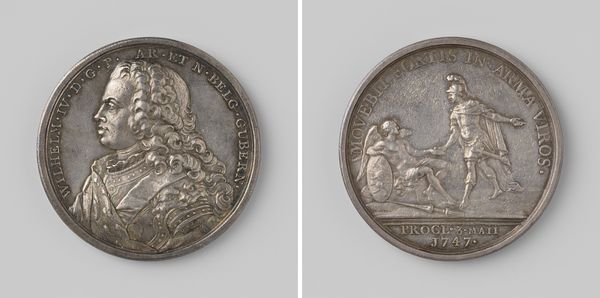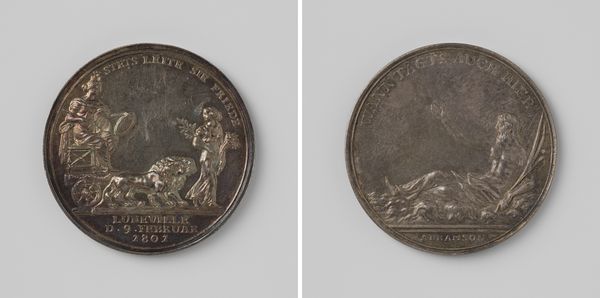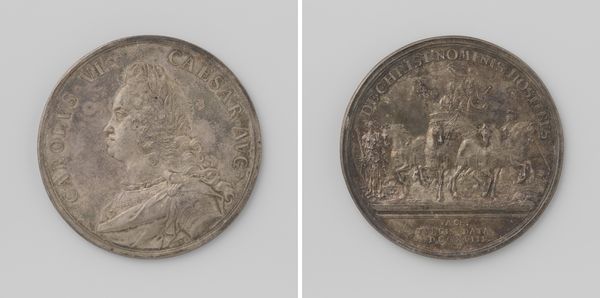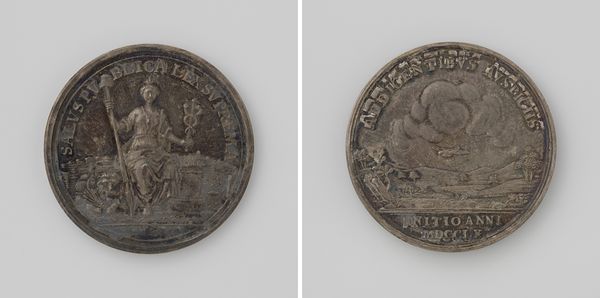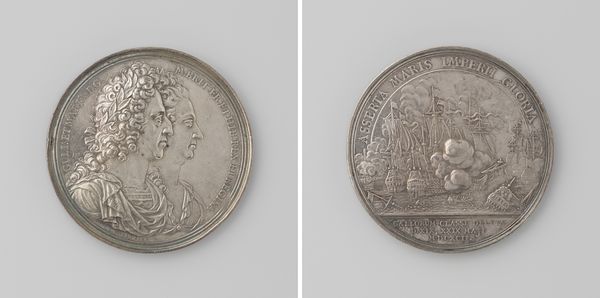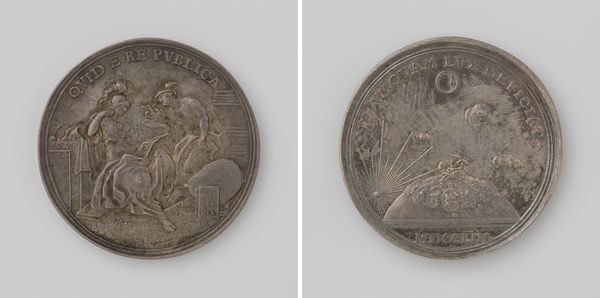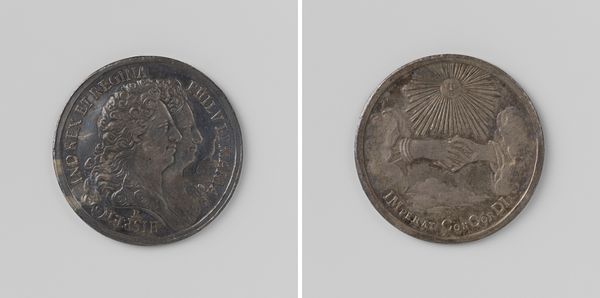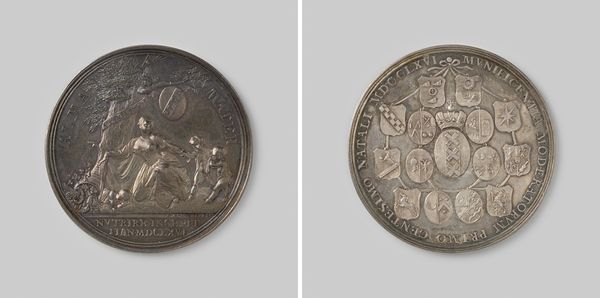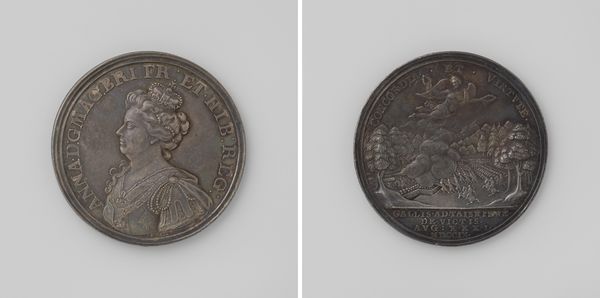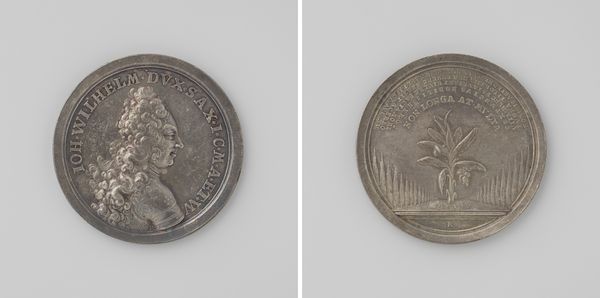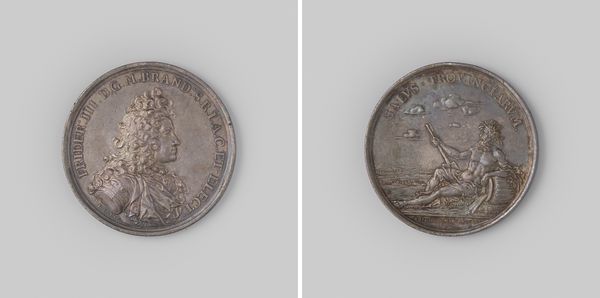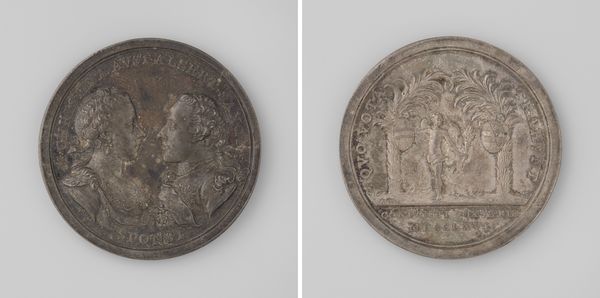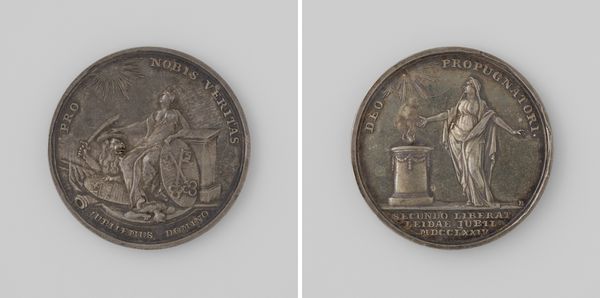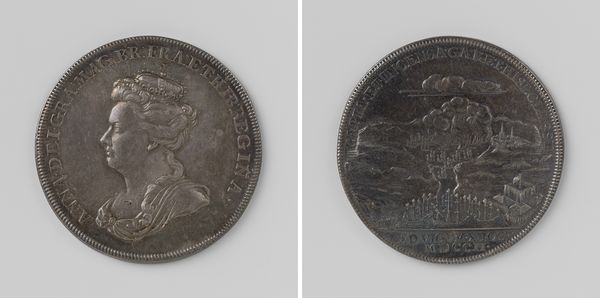
metal, relief, sculpture
#
portrait
#
baroque
#
metal
#
sculpture
#
relief
#
sculpture
#
history-painting
Dimensions: diameter 4.3 cm, weight 27.28 gr
Copyright: Rijks Museum: Open Domain
Editor: This is a fascinating piece. It's a metal relief called "Aanvang van het jaar 1746" or "Beginning of the year 1746", made in 1745 by Martin Holtzhey. I'm struck by how detailed the images are, even on such a small scale. What strikes you most about this work? Curator: As a materialist, I find myself drawn to the production of this object itself. Consider the labor involved in minting this medal – the design, the engraving of the dies, the striking of the metal. These medals served not just as representations, but as active participants in the economic and political systems of the time. How was the metal sourced? Who profited from its creation and distribution? Editor: That's a perspective I hadn't fully considered. So, beyond just admiring the images, we should think about the object's role in 18th-century society? Curator: Exactly! Think of the medal not just as a piece of art, but also a commodity. Its materiality connects it directly to the world of trade, politics, and power. Each strike represents labor and intent, beyond just aesthetic display. Editor: And how does understanding that impact how we see the imagery, like the allegorical figure or the naval scene on the back? Curator: The imagery then becomes part of that economic ecosystem. What narratives are promoted? Which ones are silenced? The material form and its images operate hand in hand to produce specific social and cultural meanings, reflecting dominant ideologies and the aspirations of those in power. Do you think the message would be more widely consumed or controlled through this medium? Editor: Definitely something to think about. Thanks! It's interesting how shifting focus to production broadens our interpretation. Curator: Indeed. Examining the object’s origin and circulation lets us unpack layers of meaning often missed.
Comments
No comments
Be the first to comment and join the conversation on the ultimate creative platform.
